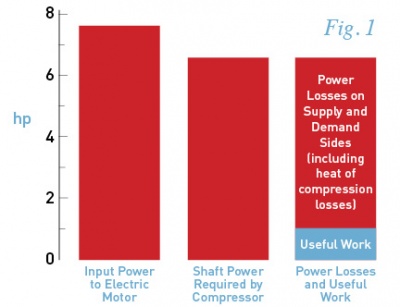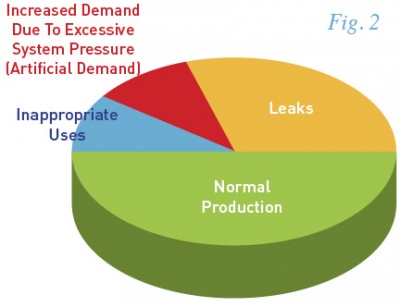Compressed Air Energy Storage Calculations: Difference between revisions
Jump to navigation
Jump to search
(→About) |
(→About) |
||
| (One intermediate revision by the same user not shown) | |||
| Line 4: | Line 4: | ||
**This could be true if compressor efficiency is 60% and tool efficiency is 20-30% for standard air tools. | **This could be true if compressor efficiency is 60% and tool efficiency is 20-30% for standard air tools. | ||
*7-8 hp input to compressor yields 1 hp at the air tool shaft. [https://fluidpowerjournal.com/air-tool-is-inefficient/] | *7-8 hp input to compressor yields 1 hp at the air tool shaft. [https://fluidpowerjournal.com/air-tool-is-inefficient/] | ||
[[File:compressedair.jpg|400px]] | |||
Losses: | |||
[[File:compressedairlosses.jpg|400px]] | |||
=Calculations= | =Calculations= | ||
Latest revision as of 20:01, 19 May 2025
Compressed air energy storage or gravity water storage costs 10x less than any other based on 100 year vs 10 year lifetime of the system.
About
- 'Only 10% to 20% of the energy required to generate compressed air ever reaches the point of use' - [1]
- This could be true if compressor efficiency is 60% and tool efficiency is 20-30% for standard air tools.
- 7-8 hp input to compressor yields 1 hp at the air tool shaft. [2]
Losses:
Calculations
- Work to compress, thus energy stored in isothermal conditions - is W = P1V1 * ln(P2/P1) [3]
- Adiabatic compression - [W = P1V1 - P2V2 / (1 - γ)] [4]
- Let's take industrial gas cylinders with K, T, 3K, 6K standards - 300 cu ft for T [5]. 2200-2600 psi is the standard, but also 3000 PSI and 6000 PSI.
- T type - 300 cf
Other
- 150 PSI, 660 gal receiver tank - $3500 [6]
Links
 Full treatment at Compressed Air Calculations
Full treatment at Compressed Air Calculations

